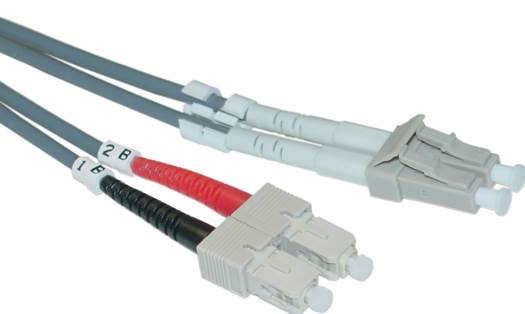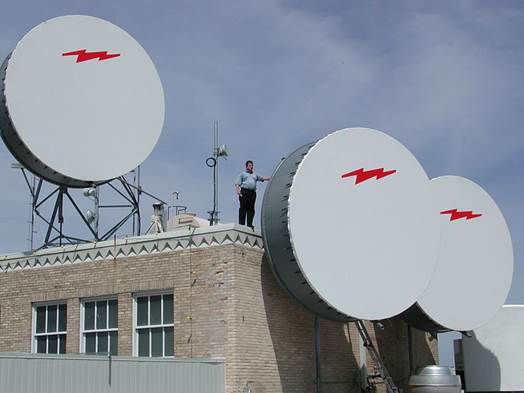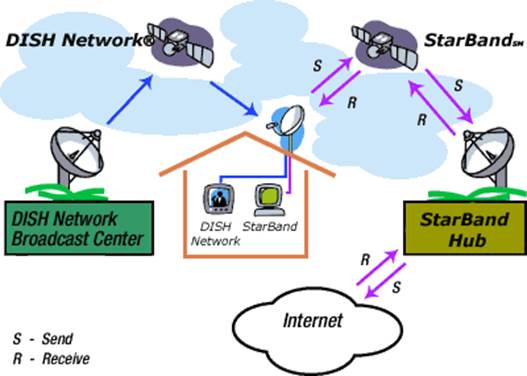Fiber
Some of the more recent, ultra-high-speed
broadband services being offered to US consumers consist of newer fiber to the home
deployments. Although fiber to home, or FTTH, is the most common term end users
are likely to hear, there are numerous types of fiber deployments currently in
flight across the country. Fiber to the neighborhood (FTTN), and fiber to the
building (FTTB), fiber to the premises (FTTP), and fiber to the desk (FTTD) are
all terms you may hear bandied about. They’re all fairy self-explanatory; the
significance of each deployment type is the peak performance that can be
achieved by each architecture.

Fiber-optic
cables can carry more data, over much longer distances, than copper wire
To put it simply, the closer the optical
fiber cable is brought to end users, the faster the broadband connection can
be. Whereas DSL providers typically offer 10Mbps-20Mbps and cable providers up
to 100Mbps or so, fiber to home providers can offer hundreds of megabits or
even full gigabit connections. Verizon’s FiOS service, for example, offers a
300Mbps plan in some parts of the country. Google Fiber, which is currently
being built out in Kansas City, will offer speeds up to 1Gbps, and Sonic.net
offers fiber services in parts of California where users can choose up to 1Gbps
services, as well.
Prices for these exotic broadband services
vary significantly from more than $200 a month for FiOS’s 300Mbps plan, to only
$69 a month for Sonic.net’ s offering. These services, however, are available
to only a small fraction of Americans at this time, so competition among the
various provides is essentially nonexistent. When asked about current fiber to home
offerings, Sonic.net CEO Dane Japers said, “None of these competitive efforts
have any substantial national market share at this time, and I don’t believe
they have much influence on the incumbents except on very small regional
pockets.” He also said, “Telcos will push fiber closer to the home (or, in the
case of Verizon, all of the way)”, however, which means some very good things
are on the horizon. Because fiber-optic cables offer much more bandwidth than
copper wine, over longer distances, it is the most future-proof of the
broadband technologies we mention here. Rest assured, it will continually be
brought closer and closer to end users, and more bandwidth will be available as
a results.
Unfortunately, as the most recent data
available on the National Broadband Map, direct fiber Internet services are
only available to 17.8 percent of potential broadband subscribers in the United
States. For fiber Internet service to have a more meaningful impact on the
broadband market, it’s going to have to reach a much larger audience. That
should happen in time, though.
Wireless broadband
Wireless broadband encompasses a handful of
technologies, including Wi-Fi, WiMAX, and the various cellular networks, among
a few others. By far, the most pervasive of these technologies as a service is
the cellar network, which thanks to recent LTE build-outs, can offer relatively
high peak bandwidth under certain conditions, at affordable rates,

Wireless
broadband encompasses a handful of technologies, including Wi-Fi, WiMAX, and
the various cellular networks, among a few others.
We’re all familiar with Wi-Fi, which is
designed to cover relatively small areas and not really sold as a service,
except for temporary hot-spot applications. WiMAX (Worldwide Interoperability
for Microwave Access) is a longer range technology designed to deliver
last-mile wireless broadband access to end users at multi-megabit speeds, as an
alternative to wireless technologies like DSL or cable. WiMAX is available from
providers in about 80 US markets, and a large number of additional markets
around the world, but it isn’t very popular as a residential solution. The 3G
and 4G cellular networks, however, account for a huge portion of Internet
traffic, mostly due to the popularity of smartphones and other mobile devices.
4G LTE networks in particular have been rapidly expanding in recent years and
offer relatively high bandwidth. In real-world situations, in markets like New
York, San Francisco, and Austin, Texas, 4G LTE broadband can offer upwards of
35Mbps down and 15Mbps up, with much higher theoretical numbers possible.
Taken as a whole, broadband wireless
Internet access is the most widely available connection type in the country.
According to the National Broadband Map, wireless internet is an option for
98.7 percent of consumers living areas where broadband connections are
available.
As useful as wireless Internet can be, it
has some major drawbacks. For one, it is relatively expensive. Wireless data
plans typically fall in the $20-$100-a-month range and offer limited amounts of
data usage. For example, Verizon Wireless offers a 4GB per month shared data
plan for $30 and a 12GB plan for $70. Exceed those limits, and you’ll have to
pay additional fees and/or contend with data throttling. Wireless Internet is
also more susceptible to interference than other connection types, and network
performance varies wildly depending on a number of factors, including distance
from the tower and network congestion. As such, wireless services are best
suited to mobile devices, as backup to Wireline solutions, or for casual users
than aren’t likely to hit the imposed data limits.
What comes after 4G LTE is still up in the
air. A 5G standard has yet to be finalized and the 4G build-out is still far
from complete. We can reasonably expect lower latency and more bandwidth at
longer ranges, but we won’t know for sure until a spec is finalized.
Satellite Internet
Satellite Internet is more of a last resort
than a viable solution for most in need of broadband. The technology is a
godsend for people who live in rural or remote areas where Wireline broadband
solutions are not available, but residential satellite broadband speeds simply
can’t match those of xDSL or cable and costs are usually higher, too.

Satellite
Internet access may be worth considering. It's ideal for rural Internet users
who want broadband access.
Typical satellite Internet speeds hover in
the 1Mbps to 2Mbps (download) range, through some of the latest technology from
providers like HughesNet offer up to 15Mbps down and 2Mbps up. There are
monthly bandwidth caps in the 20GB - 40GB per month range, however, and costs
for even the more entry level plans are somewhat higher than more common wired
solutions.
Advancements in satellite Internet will come
as compression and bandwidth technologies are improved, but the most
significant gains can only come as newer, more advanced satellite, with higher
total capacities, are but into orbit.